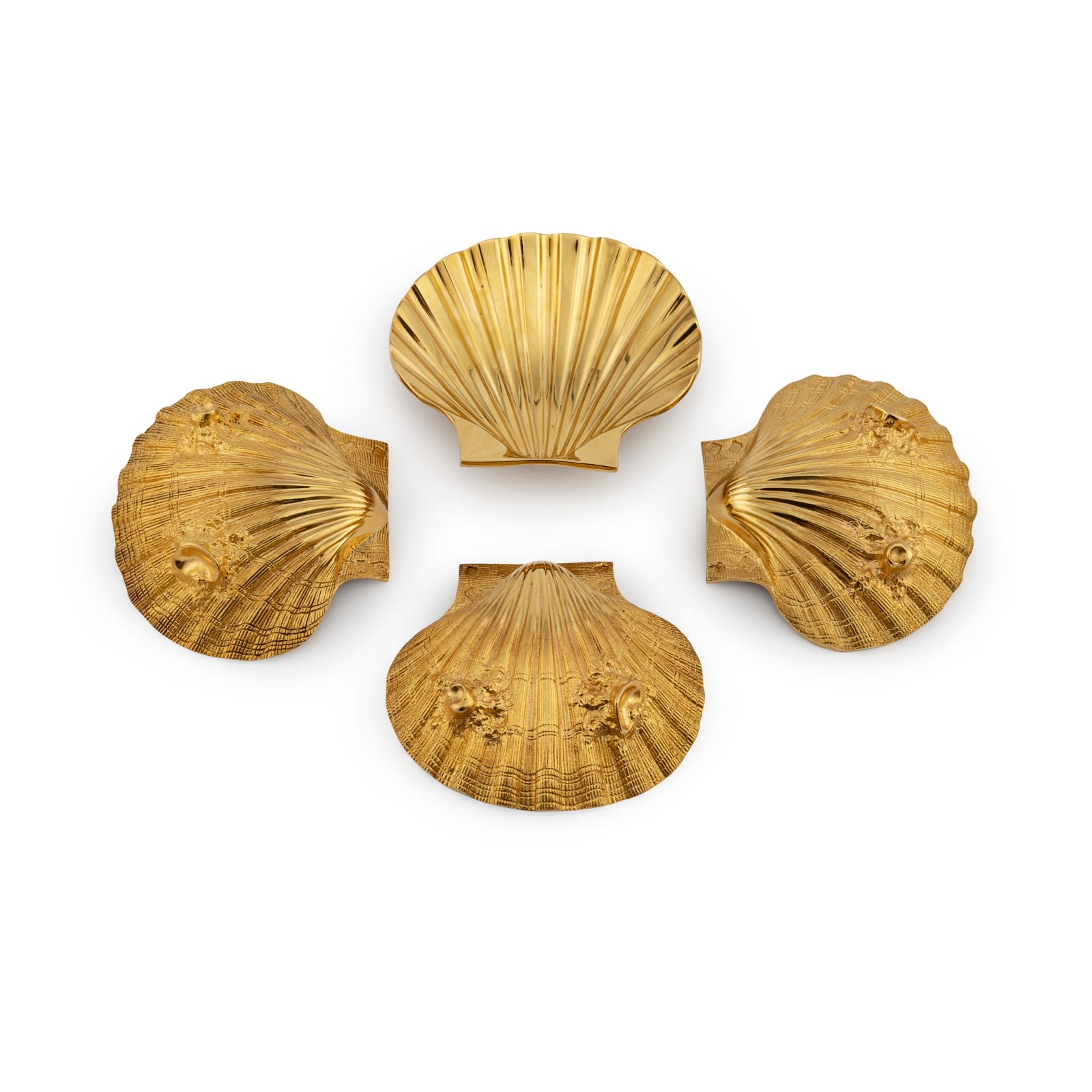
CJ VANDERS
This set of four silver-gilt shells created in London in 1970 by the firm C.J. Vanders stand as a remarkable tribute to the craftsmanship and opulent style of Paul de Lamerie, the celebrated Huguenot silversmith of the 18th century. These exquisite objects are not only functional pieces but also finely wrought works of art that echo the grandeur and detail of their historical predecessors.
Crafted from silver and richly gilded, these shells replicate the natural form of scallop shells, a motif that was particularly favoured in the Rococo decorative vocabulary of the early 18th century. The set comprises four shells intricately chased and embossed with additional marine-inspired details, such as barnacles and finely textured surfaces that mimic the natural encrustations found on shells in their native environment. These embellishments are characteristic of the lavish ornamentation that defined de Lamerie’s later work, often considered some of the finest examples of English Rococo silver.
Though they are modern reproductions, these shells serve a dual purpose: as functional tableware, possibly salt cellars or condiment dishes, and as decorative pieces that reflect the refined tastes and dining rituals of the Georgian aristocracy. The decision to replicate such historically significant pieces highlights C.J. Vanders’ commitment to preserving the techniques and artistic standards of the past. Known for their exceptional craftsmanship, the London-based firm specialised in producing faithful reproductions of important historical silver, catering to collectors and institutions seeking to connect with the heritage of fine English silversmithing.
Paul de Lamerie, whose original designs inspired this set, is widely regarded as the most accomplished silversmith working in England during the 18th century. A Huguenot refugee, de Lamerie brought a continental flair to English silver, combining technical excellence with ornate, expressive decoration. His works remain some of the most admired and studied in the history of decorative arts.
See the final image of a pair of the original shells made by Paul de Lamerie. This pair were made in 1734 and are currently in the collection of the Metropolitan Museum of Art in New York.
Join our mailing list to be the first to know about our latest treasures
* denotes required fields
We will process the personal data you have supplied in accordance with our privacy policy (available on request). You can unsubscribe or change your preferences at any time by clicking the link in our emails.